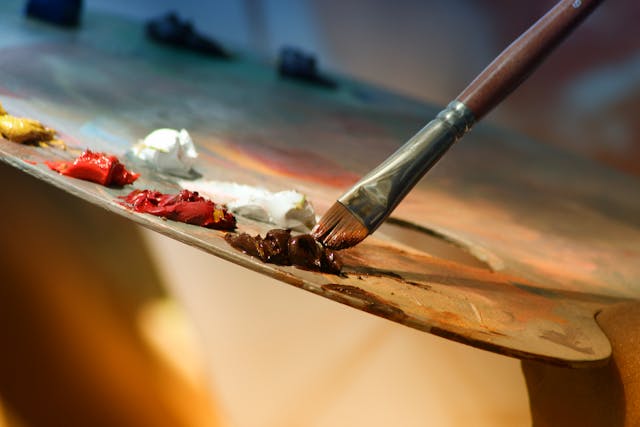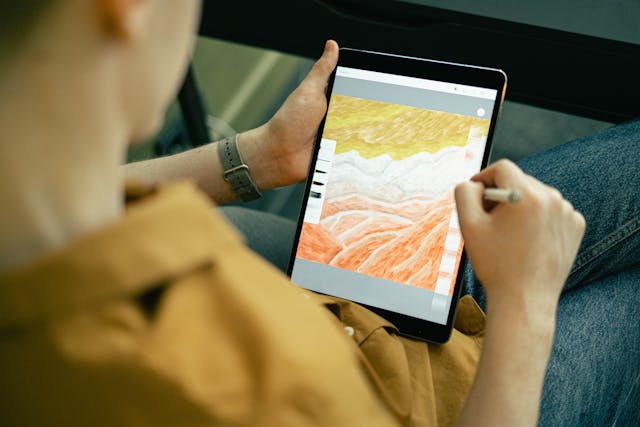From Canvas to Sculpture: Understanding the Different Forms of Fine Art
Fine art is a broad and dynamic category of creative expression, encompassing a range of mediums and techniques that allow artists to communicate emotions, ideas, and beauty. From the brushstrokes on a canvas to the intricate details of a marble sculpture, fine art has evolved over centuries and continues to inspire and challenge both artists and viewers.
In this article, we’ll explore the different forms of fine art, from painting and sculpture to more modern interpretations. Let’s dive into the world of creativity!

Painting: The Foundation of Fine Art
Expressing Through Brushstrokes
Painting is perhaps the most recognized form of fine art. With its long history, painting has been the primary medium for artists to express their creativity and emotions for centuries. Whether on canvas, wood, or other surfaces, paint allows for a vast range of styles and techniques.
Key painting styles:
- Oil painting: Known for its rich colors and long drying times, oil painting has been the favorite medium of artists like Leonardo da Vinci and Rembrandt.
- Watercolor: Lighter and more transparent, watercolor offers a soft, fluid look and is often used for landscapes or delicate subjects.
- Acrylics: A modern medium that dries quickly and is versatile for both thick and thin applications.
- Fresco: An ancient technique where pigments are applied to wet plaster, often seen in grand works like the Sistine Chapel.
Paintings can range from realistic depictions of life to abstract works that challenge perceptions. Whether representing the human condition or expressing inner thoughts, painting remains a powerful form of fine art.
Sculpture: Transforming Space and Form
From Stone to Modern Materials
Sculpture is the art of creating three-dimensional works, and it’s one of the oldest art forms in history. Sculptors use materials such as marble, bronze, wood, and clay to bring their visions to life, carving and shaping these materials into objects that can be appreciated from all angles.
Types of sculptures:
- Classical sculpture: Often based on the human form, classical sculptures like Michelangelo's David are known for their idealized representations of the human body.
- Modern sculpture: Artists like Henry Moore and Pablo Picasso pushed the boundaries of form and material, creating sculptures that were abstract or made from unconventional materials.
- Public art sculptures: These are large-scale works found in parks, plazas, or urban spaces, meant to interact with the public and environment.
Sculpture not only celebrates form and texture but also invites the viewer to engage with the piece from various perspectives, making it a highly interactive art form.
Printmaking: Capturing Multiple Impressions
The Art of Reproduction
Printmaking is the process of creating artworks by printing, typically on paper. It involves carving or etching images into a surface, then transferring the image onto paper, fabric, or other materials. Unlike painting, which is generally a one-of-a-kind piece, printmaking allows for multiple reproductions, giving artists the ability to share their work more widely.
Common printmaking techniques include:
- Etching: A process in which an image is etched into a metal plate, which is then inked and pressed onto paper.
- Lithography: Involves drawing on a stone or metal plate with oil-based materials, then transferring the image onto paper.
- Woodcut: Carving an image into a block of wood and then printing it onto paper, a technique dating back to ancient times.
Printmaking gives artists a way to create multiple versions of a piece, while still maintaining the unique characteristics of the medium.
Photography: Capturing Reality Through the Lens
The Art of Freezing Time
Photography is one of the youngest forms of fine art but has quickly become one of the most popular. A photograph captures a moment in time, transforming real-life scenes into art. Modern photography is a balance of technical skill and creative expression, with photographers using light, composition, and subject matter to evoke emotion or tell stories.
Photography styles include:
- Portrait photography: Focused on capturing the personality and essence of a subject.
- Landscape photography: Emphasizes the natural world, often showcasing dramatic scenery and light.
- Conceptual photography: Creates images that explore abstract ideas or themes, often using manipulated or staged settings.
Photography allows artists to preserve fleeting moments, from a candid expression to a carefully composed scene, and continues to evolve with digital technologies.
Digital Art: The Future of Creative Expression
Art in the Digital Age
With the rise of technology, digital art has emerged as a new form of fine art. Artists can now use computer software and tools like graphic tablets to create images that challenge traditional notions of what art is. Digital art includes everything from illustrations and photo manipulations to 3D rendering and interactive media.
Popular forms of digital art:
- Digital painting: Artists use software like Adobe Photoshop or Procreate to create artwork that mimics traditional painting techniques.
- 3D modeling: Artists use software like Blender or ZBrush to create three-dimensional models, often used in animation or video game design.
- Generative art: Created using algorithms or AI, where the computer generates a piece of art based on a set of parameters defined by the artist.
Digital art has opened up new avenues for creativity, blending traditional techniques with the endless possibilities of the digital world.

Mixed Media: Combining Materials for Unique Artworks
Blending the Best of All Worlds
Mixed media is an art form that combines multiple materials, mediums, and techniques in a single artwork. Artists might incorporate paint, found objects, fabric, photography, and more, creating one-of-a-kind pieces that blur the lines between different forms of fine art.
Examples of mixed media:
- Collage: Involves pasting pieces of paper, fabric, or other materials onto a surface to create a new composition.
- Assemblage: The combination of found objects, such as metal, wood, or plastic, into sculptures or installations.
- Text-based art: Incorporating text or written language into visual art, often conveying messages or ideas.
Mixed media allows artists to explore new dimensions of creativity, experimenting with textures, layers, and concepts.
Conclusion
Fine art is a diverse and constantly evolving world of creativity. From the timeless elegance of painting and sculpture to the modern innovations in photography and digital art, each medium offers a unique way for artists to express their vision and for viewers to experience the world in a new light.
Whether you’re admiring a classic painting in a museum or exploring a new form of digital creation online, there’s always something new to discover in the world of fine art. Embrace the diversity of these mediums and let art continue to inspire you in all its forms.












